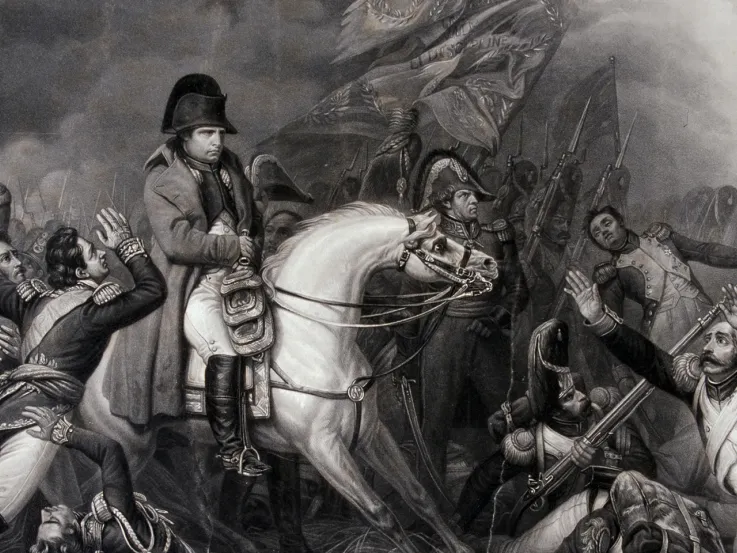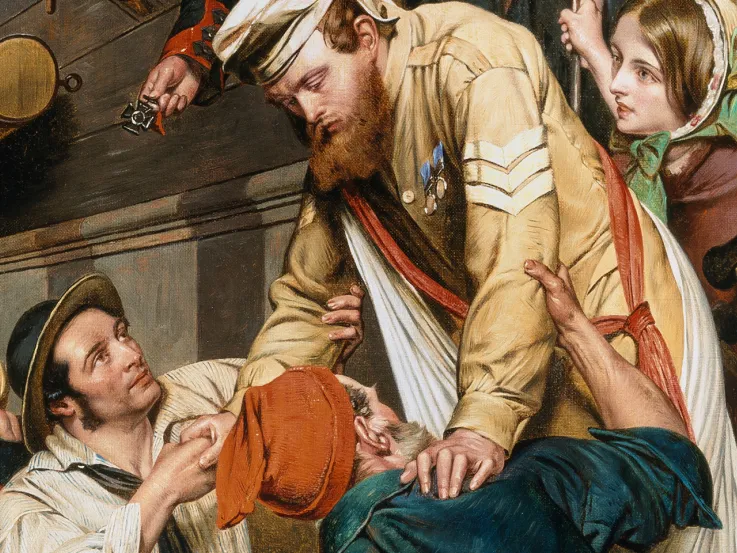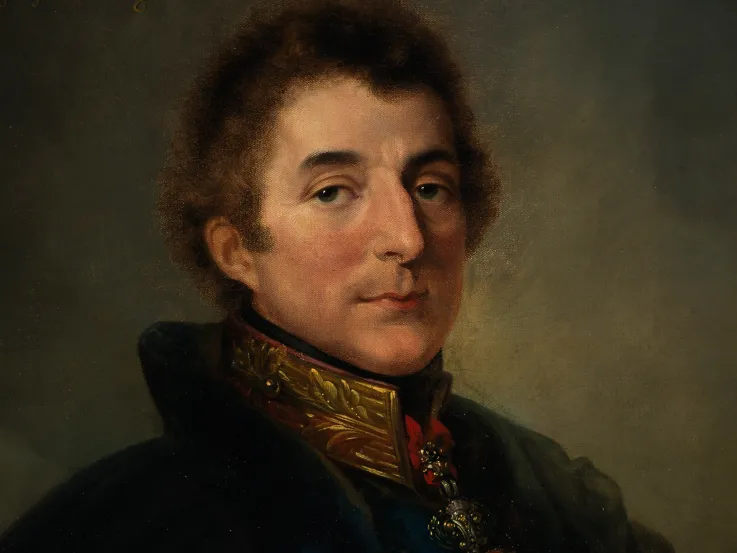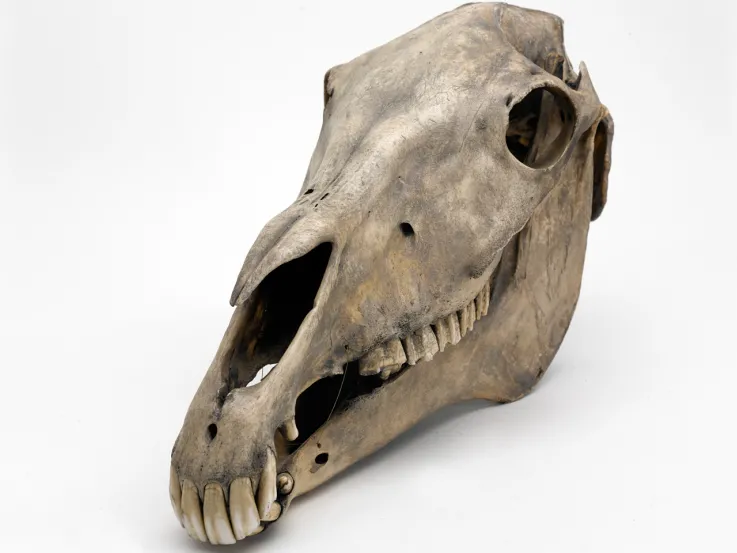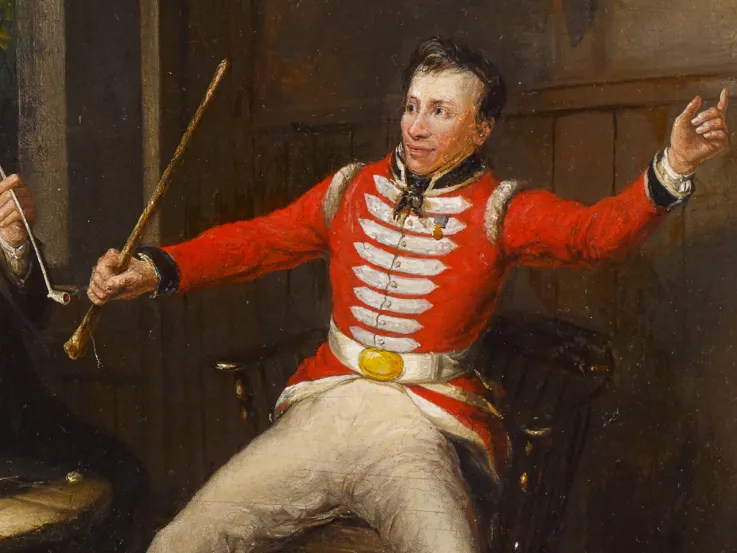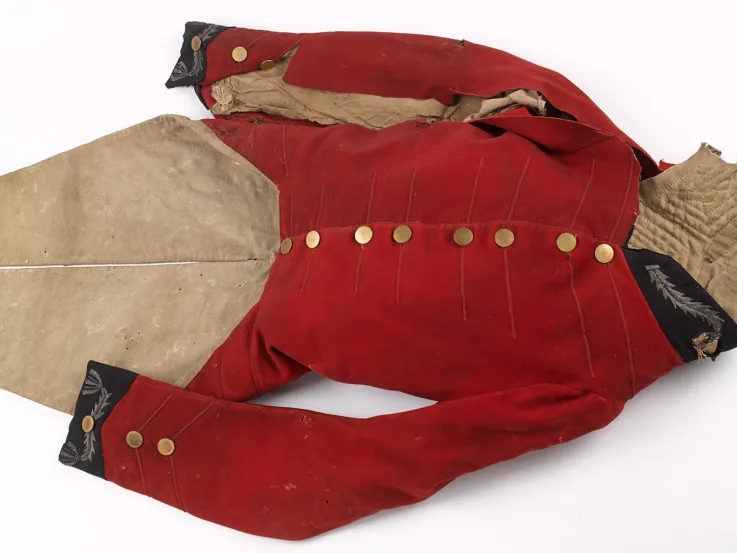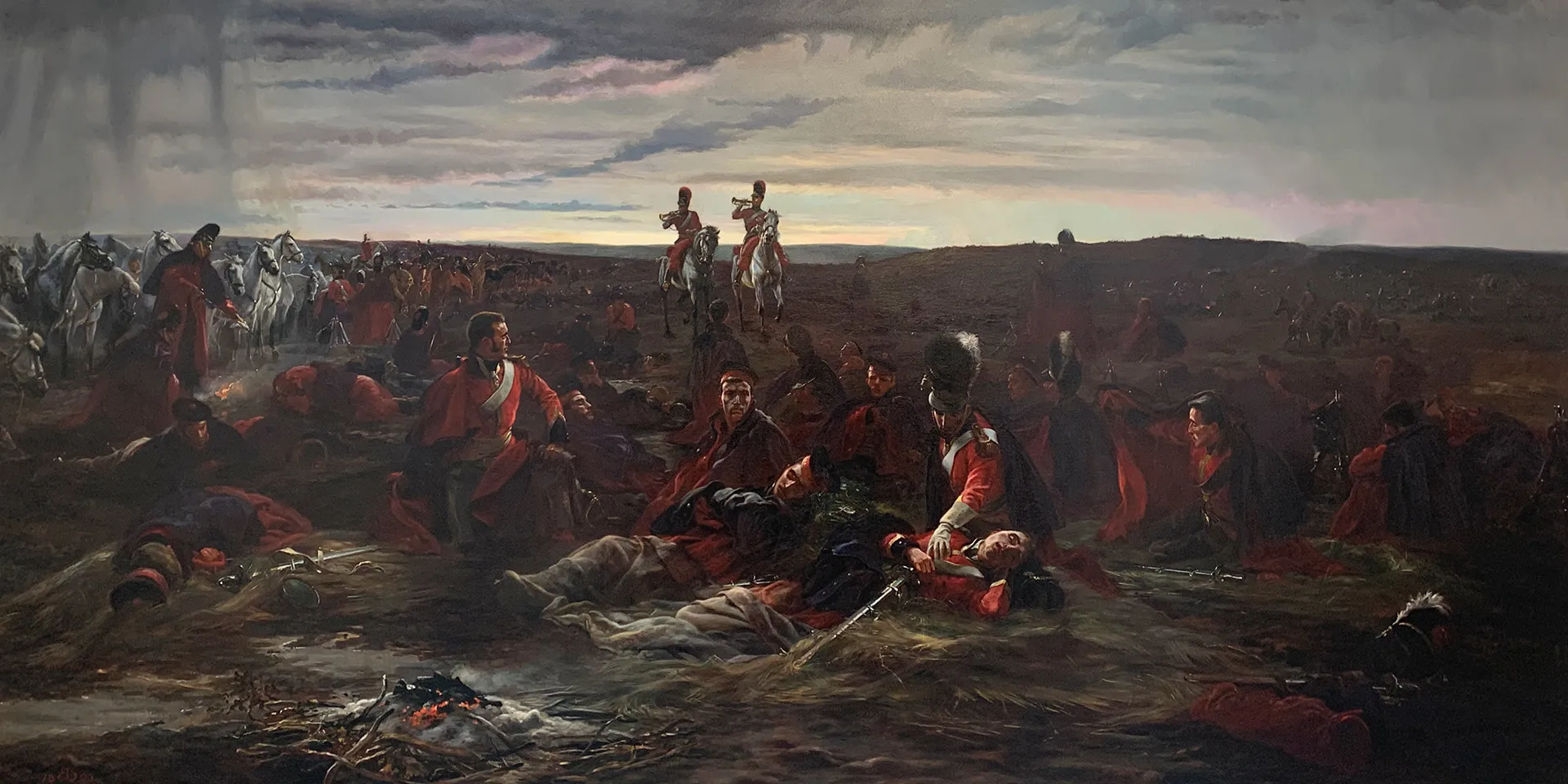
'Dawn of Waterloo', by Lady Elizabeth Butler, 1895 (Purchased with the assistance of the Art Fund)
The artist
Elizabeth Southerden Butler (née Thompson) (1846-1933) was a British artist who specialised in depictions of the Army on campaign. She gained overnight fame in 1874 when her painting 'The Roll Call' was exhibited at the Royal Academy. Among her other best-known works are ‘The Defence of Rorke’s Drift’ (1880) and ‘Scotland For Ever!’ (1881).
In 1877, Elizabeth married William Butler, a British Army officer from County Tipperary. Following his long and distinguished military career - during which he reached the rank of lieutenant general and received a knighthood - the pair retired to Ireland.
As well as depicting contemporary campaigns, Lady Butler frequently returned to subjects from the Napoleonic and Crimean Wars. She often chose to situate the ordinary soldier, his personal sacrifice and fortitude, at the centre of her scenes. 'Dawn of Waterloo' (1895) is a prime example of this.

Elizabeth Southerden Thompson, 1869 (© National Portrait Gallery, London (CC BY-NC-ND 3.0))
‘I never painted for the glory of war, but to portray its pathos and heroism.’Lady Elizabeth Butler — 1922
The painting
'Dawn of Waterloo' was acquired by the National Army Museum at auction in 2021. It had previously been loaned to the Museum for an exhibition of Lady Butler’s work in 1987.
The painting depicts the 2nd (or Royal North British) Dragoons - informally known as the Scots Greys - on the morning of the Battle of Waterloo (18 June 1815). Mounted trumpeters can be seen sounding the ‘reveille’ - or wake-up call - through the camp.
The soldiers have spent the night on what will soon become the field of battle. Many have already been roused from their slumber; others remain asleep, perhaps still exhausted from days of hard riding. This was the first time in more than 20 years that the regiment had been deployed overseas.
The Scots Greys suffered a terrible loss of life at Waterloo, taking part in the famous charge of the Union Brigade – an event immortalised by Lady Butler in 'Scotland For Ever!'
In contrast to her dramatic and heroic depiction of that cavalry advance, 'Dawn of Waterloo' shows the artist’s empathy for the soldiers. This was the last sunrise that many of them would see, and Butler draws attention to the pathos of their situation.

Removing the layers of varnish revealed a stark difference
Conservation
Before the painting could go on display, it needed extensive conservation work. Layers of yellowing varnish had given the work an oily sheen and made it rather dark and gloomy. Cracks were visible across the paint, and there were undulations on the canvas from the damaged lining behind.
Most shocking were the traces of bubble wrap across the bottom of the paintwork, giving the impression that it had been grasped by octopus tentacles!
Conservators at the University of Lincoln were able to remove the yellowed varnish, repair the cracks in the paint, and reline the canvas to straighten out the ripples.

Bubble wrap markings were visible on this sleeping soldier...

..and on this seated soldier's cloak
Skyscape
The area most obviously affected by the conservation work is the sky, which is an integral part of the composition. Butler painted 'Dawn of Waterloo' in the open air so that she could accurately capture the different hues of the sky at dawn.
All previous reproductions of the painting have a dark yellow tint to them, making the sunrise look more like a sunset. This is perhaps the first time in over a century that the painting's true tones are visible.
The conservation has also fully revealed the storm in the top-left corner. It's well documented that there was heavy rainfall the night before the battle. Ultimately, this worked to the advantage of the Duke of Wellington’s army. The sodden ground delayed the initial advance of Napoleon’s men, giving Field Marshal von Blücher and his Prussians time to join the fight.

The seated soldier's cloak before (left) and after (right) retouching
Beneath the surface
We also see evidence of changes made to the artwork before it was first exhibited, technically referred to as pentimenti.
At some point prior to the painting's appearance at the Royal Academy in 1895, Lady Butler decided to cover the legs of the sleeping soldiers in the foreground with a pale woollen blanket. The conservation has now revealed the soldiers’ finished legs underneath.
The later addition of the blanket was perhaps to emphasise the humanity of the men, hinting at the comfort and warmth they must have craved in these cold, wet conditions.
Sketches
The Museum holds many of Lady Butler's sketchbooks, which include hundreds of drawings and preliminary studies for her paintings. Contained within their pages are several sketches that informed the final version of ‘Dawn of Waterloo’.
There are numerous workings of the sleeping soldier in the foreground, the mounted trumpeters sounding the 'reveille', as well as the soldiers cleaning their weapons in the bottom-left corner.
The latter sketch is accompanied by a note, written in Lady Butler's own hand, that reads: ‘Many could not sleep so cleaned their swords…’ Details like this highlight her skill as a historian and her dedication to ensuring accuracy.
Influence
This stirring portrayal of soldiers on campaign is testament to Lady Butler’s role in shifting the emphasis in British military painting to one of accuracy, stark realism and pathos. Her work set an example for many of the war artists who followed in her footsteps.
You can see the restored ‘Dawn of Waterloo’ in our Myth and Reality exhibition, proudly displayed alongside other examples of Lady Butler's work.




